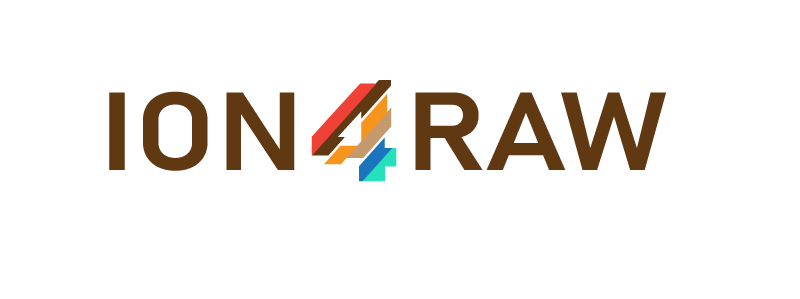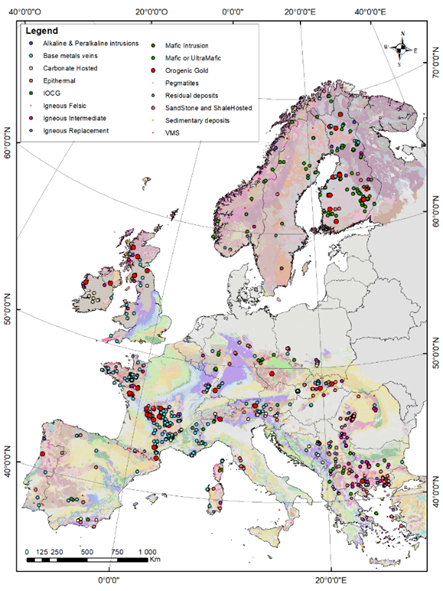The ION4RAW project is progressing and its first publics results are now available. Discover the upcoming “Mapping of by-product potential in mineral deposits” and “Technical note and methodology guide for sampling and sample preparation” conducted by BRGM.
Evaluating by-products potential
These first public results of the project are part of Work Package 2, which is in charge of displaying an extensive and comprehensive evaluation of by-products potential – Bismuth, Germanium, Indium, Cobalt, Platinium and Antomony – in Gold-Silver, Copper and Copper-Gold deposits. Increasing knowledge by compiling data on the by-product’s concentrations and distribution in the EU ores, as well as mapping the location of the potential resources, are indeed keep-points to secure new potential European sources for the critical raw materials supply.
Indeed, reliability of supply in critical raw materials is one of the major challenges facing Europe. The availability of mineral resources is notably crucial for the deployment of low-carbon technologies and economic activities, in a context of climate change and global renewable energy policy, rapid growth of emerging economies as well as fast development of modern technologies that have led to a drastic upsurge in demand for a number of metals.
Mapping of by-products potential in mineral deposits
As ION4RAW aims to develop a new energy-, material- and cost-efficient mineral processing technology to recover by-products from primary sources, one of the first steps has been to produce a geographically-based compilation of the by-product occurrences and potential in Europe, in the form of a “Mapping of by-products potential in mineral deposits” conducted by BRGM. It compiles 1400 identified European occurrences for Cu, Au, Ag and Pb-Zn main commodities. This inventory allows economical assessment of potential resources as well as assessment of metallogenic processes related to these critical raw material endowments.
Figure 1. Distribution of the identified EU occurrences (n = 1400) showing identified ION4RAW targeted by-products classified according to their metallogenic family.
However, due to the heterogeneity of the existing databases and available knowledge on the entire European deposits and occurrences, a predictive assessment was performed for targeted elements, as they are not usually and/or automatically identified and/or (historically) assessed. To do so, the DataBase Querying DBQ approach (developed by the BRGM) was applied to the entire European dataset and allowed the determination of several areas of great interest for the prospection of the targeted by-products of the project. It allows potential identification of commodities, which are either rarely reported in analyses or through divers’ permit/deposit reports by mining companies. These areas can also be studied to identify major mine sites that might be interested in applying the mineral process, which would be developed through the study. For Peru, a compilation has been initiated with partners and offers a great dataset of the sites, which might be of great interested when it comes to the application of the process developed through ION4RAW.
Read the Mapping of by product potential in mineral deposits >>
A technical note and methodology guide for sampling and sample preparation
Alongside the “Mapping of by-products potential in mineral deposits”, a second deliverable has been produced as part of ION4RAW’s Work Package 2, where the sampling operations of the ores and pre-treatment steps before analysis are notably described.
Five deposits were selected for the project. Indeed, the ION4RAW process has to be tested on different samples as ionometallurgy is mineral specific. A detailed understanding of the mineralogy of the ores is therefore required to determine optimum processing routes for the product and by-product commodities.
The technical note and methodology guide presents the protocol for sampling and sample pre-treatment implemented in WP2 to be representative of the by-products that are naturally scattered in the ore rocks.
For each of the deposits, the report provides a deposit description (geographic, geologic and reserves), a description of the sampling operations for the ION4RAW project, and a pre-treatment chart to detail the sequence of the physical preparation steps required before analytical procedure. Sampling and preparation steps are essential to guarantee a reliable and valid analytical result.
Read the Technical note and methodology guide for sampling and sample preparation >>



